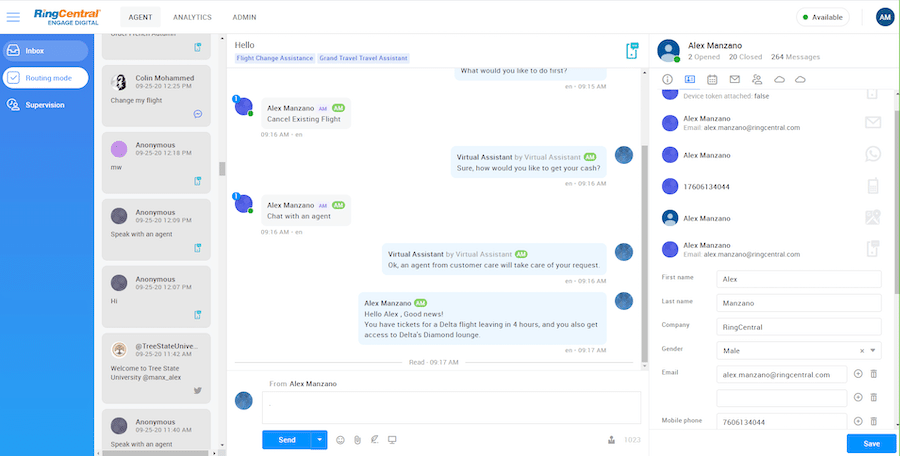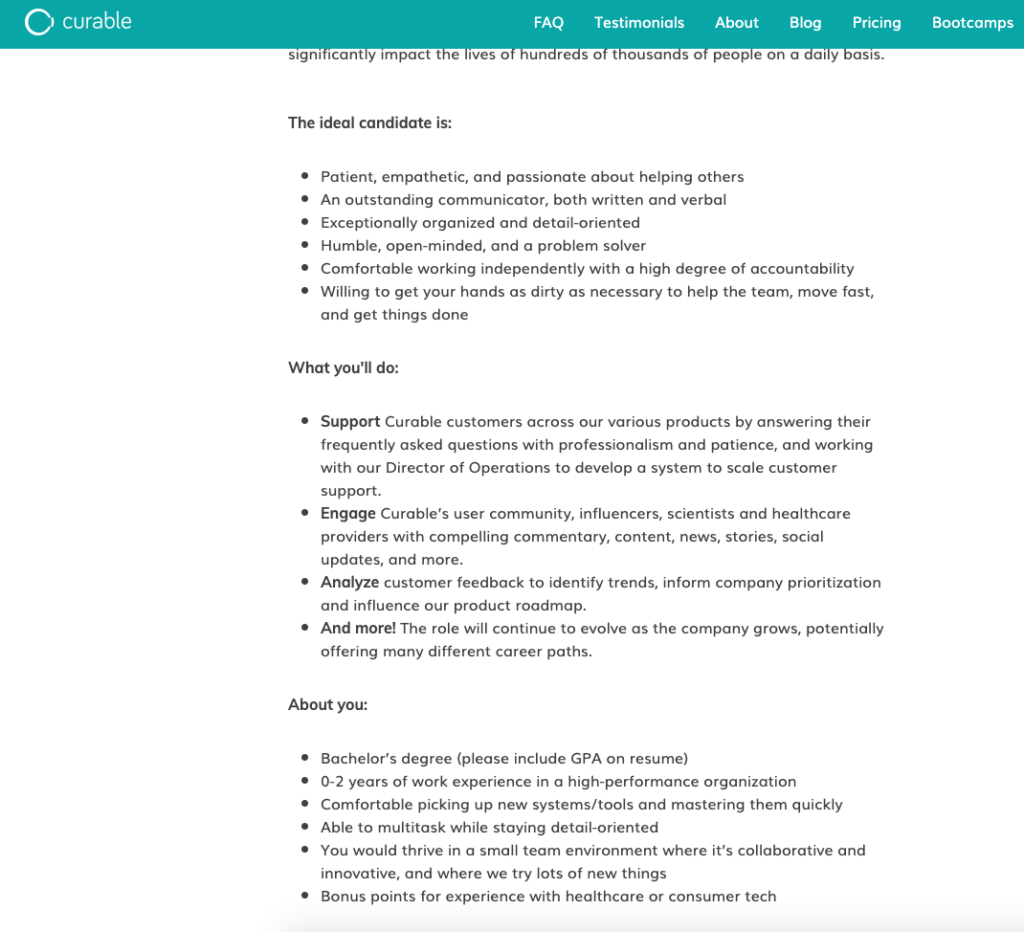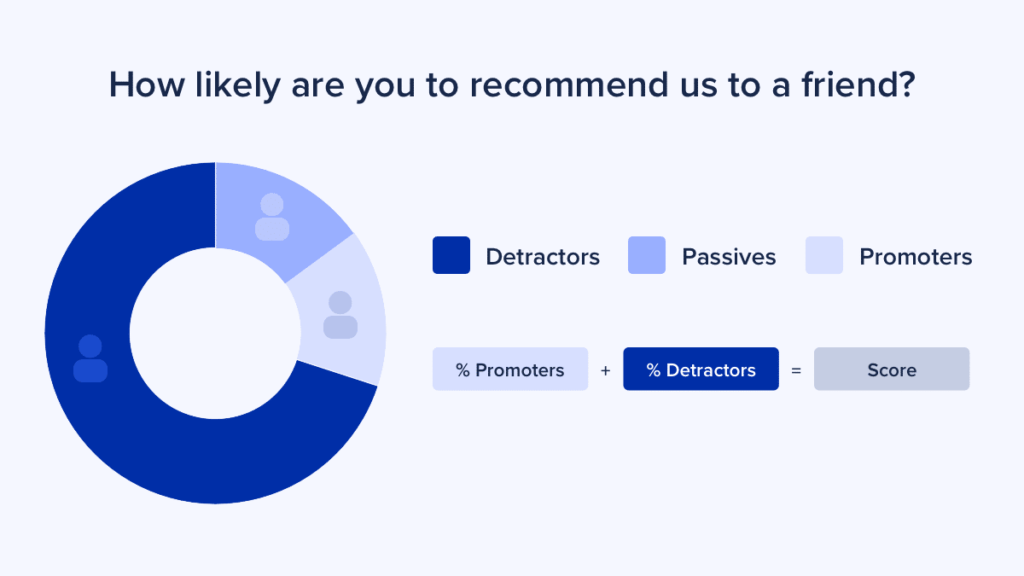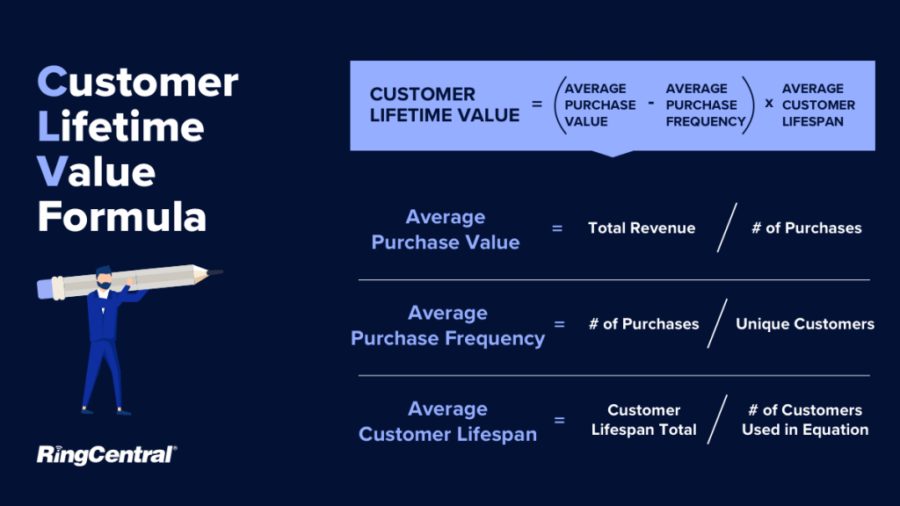When it comes to most business functions like marketing, sales, or customer service—we are programmed to believe that all customer journeys come to a finite end.
This mindset is changing with the growing importance of customer success—an approach that several businesses are taking nowadays to invest in their customers’ success and to help them achieve their goals.
Customer success looks at customer journey as a never-ending loop to deepen your relationships with customers as they grow in their respective domains.
At a time when customer acquisition costs are at an all-time high across all industries, customer success offers a powerful shot in the arm to boost your customer retention efforts.
By the end of this post, you will start looking at revenue generation differently if your business is finding it hard to add new customers into the fold.
As a company that helps hundreds of small businesses grow their potential, we never get tired of hammering this into our new customers—it’s a lot easier to keep customers than it is to acquire new ones.
Thankfully, a lot of businesses are waking up to the new reality. It’s probably the reason why an increasing number of small businesses are eager to set up customer marketing teams or farming teams—just a couple of new concepts that advocate the importance of customer success.
But what is customer success? And how is it different from customer service? In this post, we will cover all of that and give you a detailed breakdown of how you can create a customer success strategy for your own business.
Here’s everything that you will get out of this article:
- What is “customer success?”
- How is customer success different from customer service or customer support?
- Can you run a customer success program if you don’t have a big team?
- How to build a customer success strategy in 6 steps
🔑 What’s the key to building a strong customer-centric team? Grab our eBook to find out.
What is customer success?
Put philosophically, customer success (CS) is based on the idea that your business’ success depends on the success of your customers.
But how exactly does that look in a real-world business context?
It’s actually very simple to understand. Let’s say you own a grocery shop in a decent neighborhood.
As a business owner, do you prefer the families in that neighborhood to grow rich and prosper or would you rather see them become homeless and poor?
Obviously, the neighborhood’s prosperity bodes well for your business while its economic decline will directly risk your business’s survival.
In practice, customer success is a proactive way for your business to make sure your customers are successful.
That means helping your customer make the most out of your products or services so that they can realize their end goals, whether it’s saving more time or making more money.
How is customer success different from customer service or customer support?
By definition, customer service and customer support are typically reactive, and refer to when brands extend support to customers seeking answers to their questions or reaching out for help.
The scope of customer service as a business function also stops at helping customers solve their problems. Once you take care of their issues, you also resolve the ticket—case closed.
When talking about customer service, there are three aspects to keep in mind:
- Customers, who expect you to be present across all channels and respond to their queries in a timely and meaningful manner or who expect to be able to easily find answers to problems on their own without your CS team’s help.
- Agents, who control the quality of customer experience your brand offers. Happy agents make happy customers—which means increased revenue.
- Business stakeholders, such as contact center managers or crossover team members whose success ties to the performance of the customer service teams.
However, reactive support often doesn’t cut it in today’s volatile business landscape. Take the recent PwC study for instance, which found that about a third of customers will leave a brand that they love after just a single bad experience.1
Similarly, 92% of consumers abandon a brand after just two or three negative experiences.
So, it’s no longer enough for companies to monitor their phone lines and email inboxes between 9 to 5. We live in an always-on society, and businesses have to adapt to stay relevant.
Customer success, on the other hand, involves more proactive customer service. It’s a more evolved state of service where you try to anticipate what your customers might need and address those needs before they come to you with issues.
The theory is that the karmic cycle of doing good to your customers will reward you with new revenue (hello, upselling and cross-selling) opportunities since your customers will need more of your products and services as they grow.
Customer success is also different from proactive customer service in the sense that CS is a critical confluence between product, marketing, sales, and customer service.
Customer service is arguably the business of after-sales teams like customer support. But client success involves lots of cross-team collaboration like onboarding new customers, setting the sales process in motion, in addition to helping customers solve their problems.
In other words, customer success is everyone’s business.
Can you run a customer success program if you don’t have a big team?
Customer success isn’t exclusive to big companies—it’s a must for all businesses that want to grow their revenue.
We would actually argue that customer success is more important for small businesses because CS is all about going deep into your customer base instead of going wide—an area where most small businesses struggle just by nature of their sizes and organization structures.
The good news? Small teams can absolutely take a bite out of bigger incumbents if they have the right tools. For instance, if you have a small team (or it’s just you) and you want to do more with less, it’s cheaper to pick a good customer service software than to hire another person for your customer success team.
For example, RingCentral’s Engage Digital platform lets one person manage multiple social media platforms (and other channels like email and live chat) easily—here’s a quick look at how it works:
From Twitter to Facebook Messenger to phone calls, you can add pretty much any communication channel to your dashboard and see all of a customer’s past interactions with your business—without having to toggle between windows and tabs:

One person can’t reasonably “do it all”—but with the right tools, they can come pretty close.
Okay, now let’s look at a different option if you’re tight on budget.
If you’re seriously contemplating customer success but are faced with a resource crunch, the best thing you can do is—coach your customer service agents to take up customer success as an added responsibility.
Customer service agents are deft at helping customers solve their problems. Giving them the additional responsibility (with the added incentives, of course) of proactively helping the customers succeed in their goals is a sensible extension to their ninja-level customer service chops.
How to build a customer success strategy that works for your small business in 6 easy steps
Without a good plan, it’s hard to pull off an initiative that has the word “success” in it.
Devising a strategy for customer success is especially important if you are a small company that has never tried it before.
Here are a few simple and tactical steps that you can take to build a customer success strategy that works for your business.
1. Define your customers’ “success”
Success is often a subjective interpretation; it can lead to incorrect assumptions if you aren’t clear about what your customers’ end goals are.
To come up with a customer service strategy, the first step is ideally to recognize what “success” looks like—not for you, but for your customers. Preferably, in relation to your products or services.
This means you have to talk to your customers frequently, make extensive notes on what problems they are trying to solve, understand how they perceive your brand, draw up a customer success journey roadmap, and rally them for success.
These are all stories that customers will tell you when you open up and start a conversation with them. If you can master this key customer service principle, it’ll make it much easier to help them reach their goals.
Sometimes, you might end up aggregating multiple understandings of customer success—and that’s fine. Just outline the top few goals and rank them in the order of priority based on how popular they are among your customers.
2. Identify your business goals
Defining what success means for your customers is one half of the customer success model, identifying what it means for your business is another half.
No business function is free from its contribution to your company’s growth, whether it’s marketing, sales, or customer service.
Customer success also has to map to your overall business goals. How you want to map it to your brand’s goals is up to you to decide.
As a jump-off point to determine this, answer a simple question—what contribution do you want the customer success team to make for your brand?
Do you want to fight churn—the rate at which customers leave your brand?
Do you want to maximize customer lifetime value (CLTV)?
Do you want to improve customer retention and increase brand loyalty?
Or do you want to shorten your first contact resolution (FCR)?
Don’t worry too much about the above-mentioned terms if you’re not familiar with them yet—we have a specific section coming up below where we talk about important customer success metrics in detail.
As your company becomes more trained in managing customer success, you can use CS to check all the boxes.
3. Hire the right people for your CS team
If marketers, product managers, customer service agents are superheroes—a customer success team is an ensemble of superheroes who meet in a crossover universe to serve a greater cause.
Ideally, a CS team should have the right mix of product specialists, growth experts, and customer service folks to make customer success work to its full potential. Even better? If you can assemble a team of people from different parts of the world, with specific region-based expertise and the ability to converse in different languages
It’s important that recruits in your success team exhibit traits such as adaptability, empathy, and a strong sense of ownership.
As an example, here’s what Curable—a small healthcare startup founded in 2016—mentions as required traits and qualifications in its job posting for a Customer Success Associate.

When forming a new customer success team for your business, give hiring novices a pass. Instead, go back to your customer service teams and handpick people who get your product, enjoy sales and marketing, and—most importantly—are passionate about making a meaningful difference in their customers’ lives.
Once your customer success team evolves to a matured state, you can expand your hiring scope to teams beyond customer service because, by that time, you will have people to coach the newbies.
4. Use the right tools
Often in business, the simplest tools can empower people to do great things. In the context of customer success, you need various tools to lead your CS initiative to victory.
For instance, you need tools to mine data on how your customers interact with your product. The data will give you an insight into your customers’ psychology and their motivation behind using your products.
You will also need tools to communicate with your customers and with your internal teams in order to fill communication gaps so that no context gets left behind.
Using the right tool like chatbots powered by artificial intelligence (AI) can help deflect a huge chunk of your customer support traffic from live agents, giving them enough room to extend their hand to customer success.
You can train the bots to respond to basic queries like password change, address updates, etc. so that the automated systems can shoulder the bulk of the busywork while your customer success folks can focus on the stuff that matters—engaging with customers on a personal basis.
We already mentioned RingCentral’s Contact Center solution above, but RingCentral actually has another product that’s designed to make your Customer Success team’s lives easier.
Did you know that RingCentral has an all-in-one communications solution that includes messaging, video conferencing, and a phone service—all in one app?
That means you can send messages, make calls, or jump into video meetings from any device at any time:
In fact, many of our customers (like Stratejam, AseraCare, and PipelineDeals) use both the Contact Center and the desktop and mobile app to make customer success, well, a success.
RingCentral integrates with a ton of other customer success tools too—making it easy for you to connect with your customers and the rest of your team.
And one of the best things about RingCentral? It’s great for small teams, both in terms of pricing and utility. (And of course, it can grow with you and has more advanced features that you can tap into as your CS initiatives scale.)
5. Measure the right customer success metrics
Nothing great has been accomplished without measuring. CS has an analytical side to it that gets better when you measure the customer success KPIs (key performance indicators) and adjust them to achieve future goals.
Here are a few of the most common customer success KPIs:
Churn rate is the measure of what percentage of customers quit doing business with you over a given time.
Retention rate is the opposite of churn, i.e., the percentage of customers who decide to stay with you for a specific time range.
Better retention rate leads to improved customer loyalty—the number of old customers who buy from you repeatedly over a given time.
Customer lifetime value (CLTV) is the projected profit that you can earn from a customer for as long as they do business with you:
Expansion revenue is the percentage of new revenue coming from your existing customers. Expansion revenue happens mostly when customers upgrade their subscription plans, finish their free trials to become paid customers, expand their ticket size, or purchase add-on features at an extra cost.
Customer Satisfaction (CSAT), Net Promoter Score (NPS), and Customer Effort Score (CES) are metrics that measure customer happiness, to segment staunch brand loyalists from potential defectors, and to measure the quality of customer experience respectively:

First contact resolution or FCR measures the number of queries resolved in the first instance of customer interaction. How long are your customers waiting on the phone before you pick up? How long does it take you to respond to messages on social media? These are just a few of the channels to consider.
If you’re struggling to respond to customers quickly enough, that might be a sign that you need to look into better tools. Generally, some type of contact center solution would help you manage all these conversations. For example, RingCentral Engage Digital lets your customer success team solve customer questions through every single channel (including Twitter, Facebook, live chat and much more) more quickly since it consolidates everything into one dashboard:

SaaS companies are typically all over these customer success metrics, but they’re equally applicable to businesses from outside the SaaS realm as well.
For example, you can measure CSAT to gauge customer satisfaction or calculate retention rate based on how frequently your old clients visit you even if you own a law firm or a healthcare institute that isn’t based on subscription as a business model.
6. Optimize and repeat
Measuring your customer success efforts is half the battle. The second part of it depends on what you do about the outcomes.
Ideally, you should treat the outcome data as feedback for you to improve your product, service offerings, or other aspects of the customer experience that the data points to.
For example, if you get a low score of two or three (on a scale of 10) in your CSAT survey about your payment page, that means you have got a lot of work to do to improve the user experience on that page.
On the other hand, you can’t just sit on your laurels if your retention rate is through the roof. You have to notch up the bar even further to prevent any kind of saturation or identify new areas of improvement to work on.
Customer success—like other business functions that map to your company’s growth—is an ever-evolving discipline. You don’t have a finite wall to hit—you have to keep pushing the envelope, optimize your processes further, and repeat the best practices to achieve optimum results.

Carve your own path to customer success
In today’s hypercompetitive marketplace, good marketing and customer service alone aren’t enough to grow your business. Proactive customer success management is what helps your business minimize your acquisition costs, rake more revenue, and keep your customers for life.
And be warned—there isn’t a one-size-fits-all customer success playbook that you can use for your business. You can’t just copy-paste the customer success programs that other companies might have successfully applied in their growth.
Customer success is a uniquely nuanced application—what worked for others might not work for you.
Apply the steps discussed above to carve your own path to customer success in order to deliver maximum value to your customers and in turn yield good returns for your business.
1 pwc.com/us/en/services/consulting/library/consumer-intelligence-series/future-of-customer-experience.html
Updated Mar 13, 2025














